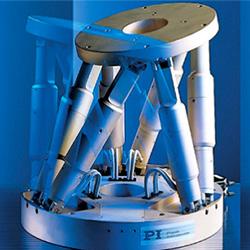Manufacturing Management Must-Haves for Hybrid Teams
By addressing some of the most prominent pitfalls, leaders can adopt this growing workplace trend without compromise. Here are three critical challenges to a remote work transition and steps every manufacturing leader can take to mitigate those difficulties today.
No Manufacturing Work Shortage if Manufacturers Enroll and Engage Gen Zers
More than appearances, manufacturers must speak to the positivity of a diverse workforce. Gen Zers expect it, they demand it, and will tell friends to work for companies promoting a varied workforce on both Instagram and Tiktok.
Transforming Workplace Training With the Most Effective Digital and Augmented Reality Tools
With skill gaps growing wider and continued predictions of future job vacancies, manufacturers need to place employee skilling at the top of their strategic operating plans if they're going to maintain a productive workforce and compete on a global scale.
Records 1 to 3 of 3
Featured Product

PI USA - High-Speed Hexapod for Nanopositioning
To meet industrial demands for higher dynamics, reliability and precision in 6DoF positioning systems, PI engineers came up with a new hexapod concept, based on direct-drive lever actuators. This new concept reduces complexity, improves performance, and minimizes wear.
Manufacturing and Automation - Featured Company

Teledyne FLIR
Teledyne FLIR designs, develops, manufactures, markets, and distributes technologies that enhance perception and awareness. We bring innovative sensing solutions into daily life through our thermal imaging, visible-light imaging, video analytics, measurement and diagnostic, and advanced threat detection systems. Teledyne FLIR offers a diversified portfolio that serves a number of applications in government & defense, industrial, and commercial markets. Our products help first responders and military personnel protect and save lives, promote efficiency within the trades, and innovate consumer-facing technologies. Teledyne FLIR strives to strengthen public safety and well-being, increase energy and time efficiency, and contribute to healthy and intelligent communities.



